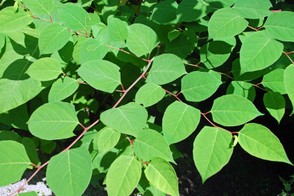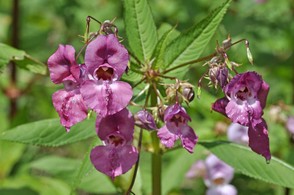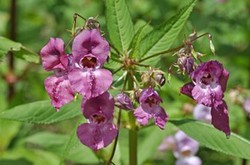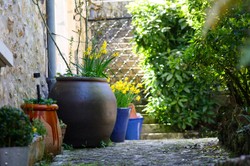Britain's worst invasive mammal is the grey squirrel. Introduced from North America in the nineteenth century, it has out-competed the weaker native red squirrel, and to make things worse carries a virus deadly to the red variety. They can be a nuisance in gardens, where they dig up plants. Fortunately on my allotment there is a fox, who has her own intentions for the grey squirrels, so they stay away. The red variety, however, can nest in conifers, whereas the grey cannot, so conifer plantations are something of a refuge for the native species, and there have been some local culls of grey squirrels in other places, such as conservation areas. The chef. Hugh Fearnley Whittingstall, suggests eating them, but this has not caught on.
A larger and more potentially dangerous problem are wild boar, which are found in some parts of the country and are spreading. Some are escapees from farms, but others were deliberately released by animal rights activists who thought that they should be free to roam wild. The only problem is that males can reach 350 pounds weight, they have sharp teeth and tusks and can run faster than a human! The fact that one farmer who kept them used a double steel cage and entered their pen armed with a rifle and a knife, with another man to guard his back, says much about how dangerous these beasts are. So far no human has been attacked, and the boar prefer to hide in woods to avoid us, but some walkers in forests have been chased off by boar, and recently a vet saw a group eating a lamb by a roadside, but whether they had killed it or not is unclear. They have taken to raiding gardens in parts of the South East, and you cannot scare them away. One silly journalist spoke of getting the shotgun. No way, a shotgun merely stings and enrages them to attack. Use a well-aimed and lethal shot with a hunting rifle or not at all. I have never met them, but as I have no hunting rifle, there is nothing I could do about them.
A final, but minor nuisance is the muntjac, diminutive Chinese barking deer the size of a large dog. They never attack anyone, and recently some vandals who killed one aroused outrage. The only problem is that they strip the bark from young trees and so can destroy plantations. Extermination is unnecessary, but some culling might be done to manage numbers. However, there has been talk of re-introducing the once native, but now extinct European lynx. This cat never attacks humans, but has a taste for small deer. Introducing natural predators is a useful strategy that obviates the need for men with guns roaming woodlands, which is a bigger threat to humans than the muntjac is.
In fact, men with guns can be the biggest danger of all. Natural predators don't fire bullets that can go astray and hit someone. Roll on the lynx.










 TheThousand Year Gardenon 11/26/2025
TheThousand Year Gardenon 11/26/2025
 Women of the Gospelson 10/11/2025
Women of the Gospelson 10/11/2025
 Religious Gardenson 08/25/2025
Religious Gardenson 08/25/2025
 Doctor of the Church: John Henry Newmanon 08/03/2025
Doctor of the Church: John Henry Newmanon 08/03/2025



Comments
I have heard no mention of them,so they probably are not here.
An arborist-related webinar this week, through UMass-Amherst Extension's Urban Forestry Today, covered the expected pests for 2023.
Have you all over on the eastern (Atlantic) pond side had any experiences with zigzag sawflies? They represent one of the biggest invaders of the United States this year.
Internet sources say that they spread from China and Japan into 15-plus European countries!
Great. This is the first time that you have commented on one of my articles.It is good to get to know you.
That wild food book is great. I used it when I was a kid to make chestnut soup and nettle beer.
I just want to say that your blog is absolutely amazing.
This is a really very informative and updated content. Appreciate your hard work and committed with a professional attitude.
http://techmoab.com/
Thank you for giving them this great knowledge, really thank you for sharing, hope you will have such great posts as this more.
great work buddy
I've read all your information that you shares in your article and I really love it. Thank you for sharing this post. I appreciate it.
- <a href="http://twettrends.com/">twitter search</a>
Thanks for your post! Through your pen I found the problem up interesting! I believe there are many other people who are interested in them just like me! Thank you for sharing them with everyone!
http://slitherio-o.com